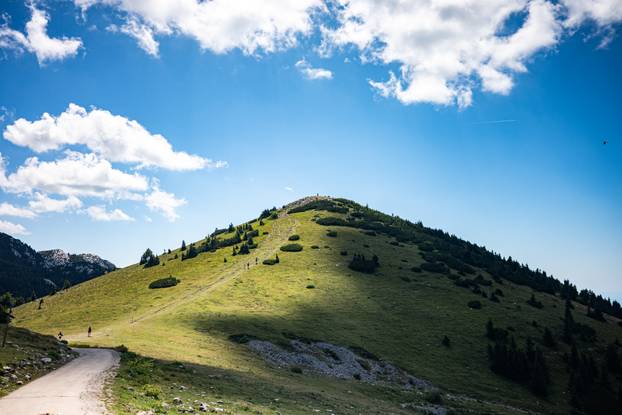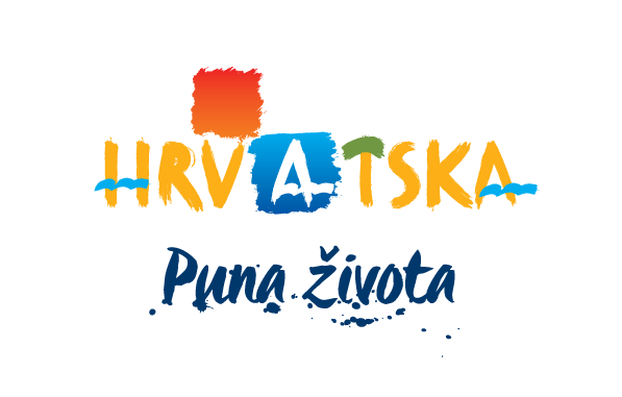Lika from a different angle: Mountains, legends and paths worth visiting and exploring
When someone asks you what your perfect trip to Croatia was, the one that stuck in your memory like a movie scene, what destination comes to mind first? For many, Velebit is among the first sights that come to mind.
Velebit is not just a mountain. It is a landscape that opens like a book: rocks that tell legends, rivers that write their own novels, caves that whisper about thousands of years of silence and cuisine that warms the soul. This is the area of Lika, where nature still rules and where every path turns into a story that you take with you. And when that story ends with warm bread, smoked meat and the smell of soup boiling on the stove, you know you have arrived at a place that will not be forgotten.

Tulove grede that lead to the heart of the mountain
Tulove grede, located in the Velebit Nature Park, is a group of almost vertical limestone towers and cones connected in a ridge about 1000 meters long, with the highest peak at 1120 meters. Their stone row seems to proudly watch the sea, and as you approach them, they become larger and more imposing. This natural amphitheater has aroused awe for centuries and inspired legends: stories of dragons that lay there, of the Black Queen who reigned in them, and of the invisible Velebit fairies, who are said to still weave their magic among the rocks today.
Tulove grede is reached by the famous Majstorska cesta, a panoramic road from the 19th century, which connects the sea and the interior and reveals breathtaking scenes at every turn. In its shadow lies another gem - the Dabarska cesta. Less well-known, but no less exciting, it runs through central Velebit, through beavers and otters, forest valleys and plateaus, above which rise the Dabarski kukovi, a ten-kilometer-long series of rocks, from Bačići kuk to Ljubičko brdo. Today, it is one of the most beautiful mountain bike routes in Croatia and a path that leads straight into the heart of the Velebit wilderness.
Water and legends
Velebit is not just a mountain, it is also a place of legendary waters. The most famous among them are certainly the Plitvice Lakes, the oldest and most visited national park in Croatia. Thousands of waterfalls and lakes overflow each other, creating a scene that looks almost surreal. Science explains their beauty by the process of tufa deposition, but the people have their own story. During a time of great drought, when the Black River, the source of the Plitvice Lakes, dried up, the people gathered at the Spring of Life. The Black Queen heard their prayers and sent rain, which fell for days, forming the lakes. The first of them, Prošćansko, owes its name precisely to prayer - "to beg".
On the other side of the mountain, in the Zadar hinterland, lies the Bijela River, still undiscovered by the wider tourist masses. It springs from a 250-meter-long cave, and its waterfalls and rapids form the white thread after which it was named. The canyon is up to 300 meters deep in places, and from the top of Pržun the view opens up to a landscape that combines karst, sun and water into a scene of almost unreal beauty. Its path between the orange rocks of Gornji Karin is called by many the "Croatian Grand Canyon" - and rightly so.

The underground world of Velebit
Beneath the rocks and forests of Velebit lies an underground world that is just as fascinating as the one on the surface. Near Perušić is Grabovača, the only cave park in Europe. In just 1.5 square kilometers, there are eight caves and one pit, five of which are protected as geomorphological natural monuments. The most famous of them is the Samograd cave, whose four halls evoke the spirit of past times and natural silence.
In the south of the Velebit Nature Park are the Cerovac Caves - Lower, Middle and Upper - with more than seven kilometers of explored channels. They are rich in archaeological finds and the remains of a cave bear, testifying to thousands of years of natural history. In the Paklenica National Park, the Manita Peć cave is open, the only cave in the park open to visitors. Decorated with stalactites, stalagmites, stalagnates and stones, it hides shapes that stimulate the imagination: a helmet, an organ, a witch... each decoration is a natural sculpture.

Lika food warms the soul
When you leave the trails, forests and rocks behind you, the Lika cuisine comes to the table - simple, hearty and deeply connected to the region. The first smell that greets you is often that of freshly baked bread: corn, barley or spelt, with a crispy crust and a warm, moist interior. In some houses they are still baked in bread ovens, and that smell mixes with the smoke of wood and the aroma of meat sizzling under the baking sheet.
Škripavac, a cheese that really crunches under your teeth, salty and fresh, is served with thick slices of homemade bread and onion slices. It is often accompanied by thin sausages, dry and fragrant with smoke, with paprika and garlic that warm the palate. When warm homemade chicken soup is served on cold evenings, with hand-cut noodles and fatty "homemade" mushrooms dancing on the surface, the body seems to return to balance on its own.

The main course is often a Lika pot, slow-cooked over low heat, full of braised beef, cabbage, potatoes, onions and garlic. When the lid is lifted, the steam carries a deep, earthy aroma of meat and vegetables falling apart under the fork. It is accompanied by polenta, thick and yellow, which soaks up the juices on the plate like a sponge. During the holiday season, the entire village is filled with the aroma of lamb on the spit, the golden skin rustling under the knife, and the meat is soft and juicy. The suckling pig cracks under your fingers, and the fat mixes with the aroma of roasting and fresh bread.
A special place is occupied by čepurki, forest mushrooms that are simply salted and roasted on the stovetop. Their aroma is reminiscent of damp earth and pine, and the taste is full and slightly nutty. In autumn, the kitchen is filled with the aroma of baked apples and plums, and winter meat and cured meat products are taken out of the pantry.
And what is a good meal without a glass of homemade brandy - fragrant, strong and bitter, or without a sip of wine, which in these parts has a special weight. Food in Lika is not just nutrition, it is an act of togetherness, a way to warm the body and calm the soul. Families, neighbors and travelers gather at the table, and every bite carries the taste of the mountain, the field and the weather.

The content brings Hrvatska turistička zajednica.
Downloaded from: 24 sata.
News - All


